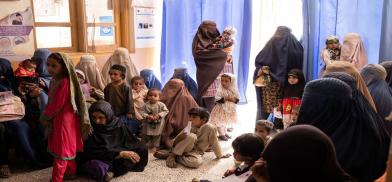Under Taliban, Afghan economy has all but collapsed, thousands of businesses shut down; middle class has vanished
In August this year, the Taliban seized power in Afghanistan, ignoring the warning from the international community against the forceful seizure of power

In August this year, the Taliban seized power in Afghanistan, ignoring the warning from the international community against the forceful seizure of power. The US and other donors responded by freezing the country’s reserves and cutting off aid that sustained the previous Afghan government for almost two decades. As sanctions continued, the country’s banking sector has all but collapsed, further worsening the humanitarian crisis earlier caused by the escalating war.
Millions of people lost their savings as they find themselves unable to withdraw cash. Amid the cash crunch, thousands of businesses shut down across the country, leaving many people jobless. The Taliban, the new rulers, purged several government employees associated with the previous government.
Those who managed to retain their jobs, mostly in essential sectors, remain unpaid for over three months. Even employees associated with the health sector are now struggling to stay afloat.
Earlier this month, the World Health Organization (WHO) warned that around 3.2 million children were likely to suffer from acute malnutrition by the end of the year in the country. About one million of them are at risk of dying as temperatures drop, the WHO said.
The middle class that once formed the backbone of the cities like Kabul and Mazar-e-Shariff has all vanished. Many left the country; others are planning to leave soon. Multiple reports showed how thousands of these people had put their household items from blankets, clothes to furniture on roads to sell.
Pressure is also building upon the international community to respond fast to the crisis. There is no sign of the Taliban getting recognition anytime soon. However, it is also hampering the delivery of aid to people. The banking system remains cut off from international banking.
A few weeks ago, the US and the EU had pledged to provide $1.29 billion more in aid to Afghanistan and to Afghan refugees in neighboring countries. However, the crisis has now become something that can’t be managed alone by aid.
Last month, the United Nations Development Program (UNDP) said, “Afghanistan’s financial and bank payment systems are in disarray. The bank-run problem must be resolved quickly to improve Afghanistan’s limited production capacity and prevent the banking system from collapsing.”
The UNDP further stated that by the middle of next year as much as 97% of the Afghan population could sink below the poverty line, meaning universal poverty. Many people who were already living hand to mouth have been pushed over the edge. The country’s economy, the IMF said last month, is set to contract by almost 30 percent (SAM)
(SAM)








Post a Comment